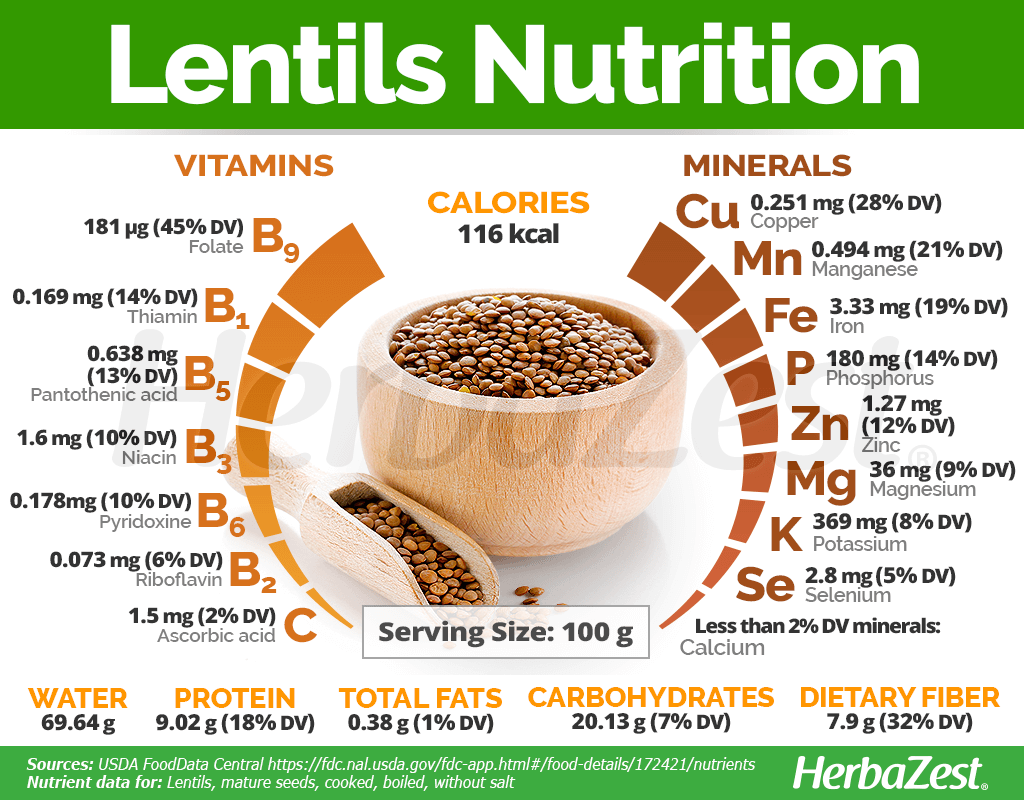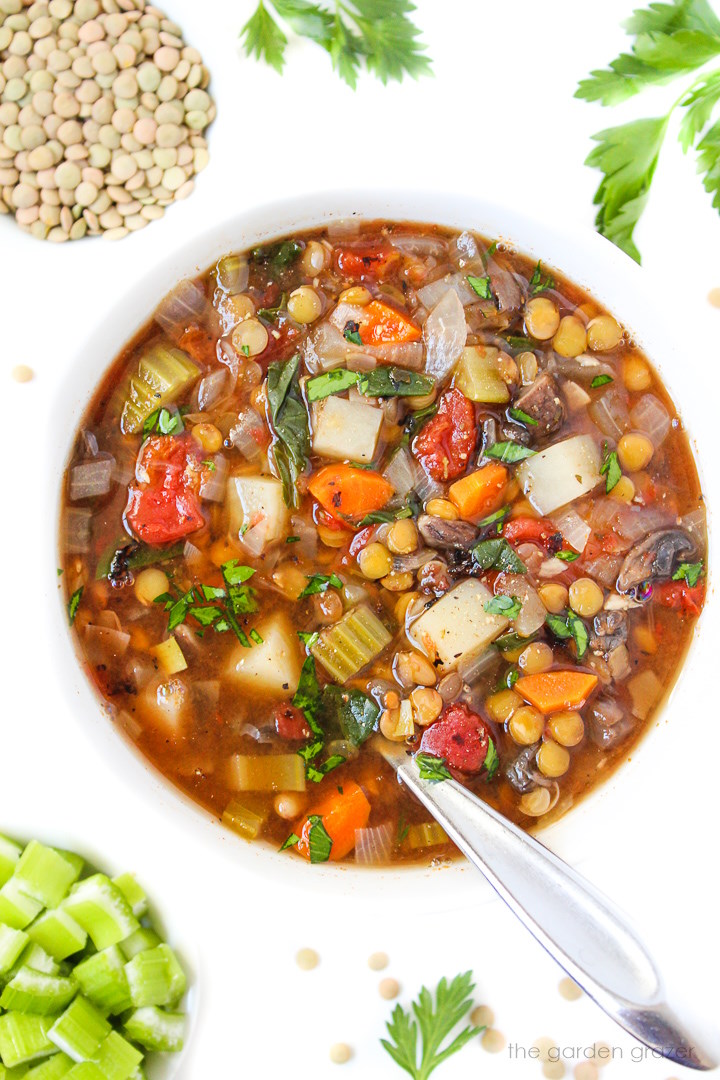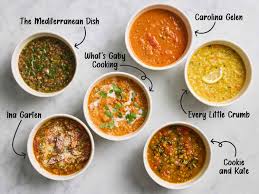
A steaming bowl of lentil and vegetable soup, perfect for cozy meals.
Introduction
Lentil and vegetable soup is more than just a simple dish; it’s a culinary staple that has warmed hearts and nourished bodies across cultures and centuries. This humble soup, brimming with earthy lentils and vibrant vegetables, embodies comfort food at its finest. Whether you’re seeking a quick weeknight meal, a nutritious option for meal prep, or a versatile recipe that can be adapted to dietary needs, lentil and vegetable soup delivers on all fronts. In this comprehensive article, we’ll delve deep into its origins, health benefits, preparation methods, variations, and more, providing everything you need to make this soup a star on your table.
At its core, lentil and vegetable soup is a blend of lentils—small, lens-shaped legumes packed with protein—and a medley of vegetables like carrots, celery, onions, and tomatoes. Vegetable Soup’s appeal lies in its simplicity: it’s easy to prepare, inexpensive, and infinitely customizable. For those new to cooking, it’s an ideal entry point into homemade Vegetable Soups, requiring minimal equipment beyond a pot and a stove. Seasoned chefs, on the other hand, appreciate its flexibility, allowing for creative twists with spices, herbs, and additional ingredients.
One of the reasons lentil and vegetable soup has endured is its alignment with modern dietary trends. It’s naturally vegan and gluten-free in its basic form, making it accessible to a wide audience. In an era where plant-based eating is on the rise, this soup stands out as a powerhouse of nutrition without sacrificing flavor. According to various recipes, such as those from Forks Over Knives, it can be prepared in under an hour, yielding a meal that’s low in calories yet satisfyingly filling.
But why focus on lentil and vegetable soup specifically? In a world flooded with trendy superfoods, lentils remain an unsung hero. Originating from ancient times, they’ve been a dietary cornerstone in regions like the Middle East, India, and Europe. When combined with vegetables, the soup becomes a symphony of textures and tastes: the creamy lentils contrast with crunchy carrots, while aromatic herbs elevate the broth. This article will guide you through crafting your own version, complete with tips for perfection.
For more plant-based inspirations on our site, check out our Vegan Soup Collection. Externally, resources like the USDA’s nutrition database offer insights into ingredient profiles USDA FoodData Central.
As we explore further, you’ll discover how this Vegetable Soup isn’t just food—it’s a story of sustenance, health, and cultural heritage. Let’s start by tracing its roots in our website like TASTETROVE.
The Rich History of Lentil Soup
Lentils have one of the longest histories among cultivated foods, dating back over 9,000 years to the Neolithic era in the Near East. Archaeological evidence from sites in modern-day Syria and Turkey shows that lentils were among the first domesticated crops, alongside wheat and barley. This makes lentil soup not just a modern comfort food but a dish with ancient pedigree.
In biblical times, lentils gained notoriety through the story of Esau and Jacob, where Esau traded his birthright for a bowl of lentil stew. This “mess of pottage,” as it’s often called, highlights lentils’ value as a nourishing staple in ancient diets. In Egypt, lentils were found in pharaohs’ tombs, symbolizing their importance for the afterlife journey. The Romans and Greeks prized lentils for their affordability and nutritional density; Hippocrates, the father of medicine, recommended them for liver ailments.
Moving to the Middle Ages, lentil soup became a fixture in European peasant cuisine. During times of famine, lentils provided essential protein when meat was scarce. In France, “potage” soups often featured lentils, evolving into what we know as French lentil soup with Puy lentils. Meanwhile, in India, dal—a lentil-based soup or stew—has been central to Ayurvedic medicine for millennia, believed to balance the body’s doshas.
The vegetable component in lentil soup likely emerged as agriculture advanced. Carrots, onions, and celery— the classic mirepoix—were added for flavor and nutrition. In the Ottoman Empire, mercimek çorbası (red lentil soup) incorporated tomatoes after their introduction from the New World, blending Old and New World ingredients.
In the Americas, lentil soup arrived with European immigrants. During the Great Depression, it was a go-to for budget-conscious families, as noted in historical cookbooks. Today, it’s celebrated in global fusion cuisines, from Moroccan harira to Italian zuppa di lenticchie.
For deeper historical dives, visit The History of Lentils from Lentils.org. On our site, explore related articles like Ancient Grains in Modern Cooking.
The evolution of lentil and vegetable soup reflects human ingenuity in turning simple ingredients into something profound. Its history underscores why it remains relevant: it’s adaptable, resilient, and timeless.
To understand its appeal fully, let’s examine the nutritional profile that has sustained civilizations.

Infographic highlighting the nutritional benefits of lentils.
Nutritional Benefits of Lentil and Vegetable Soup
Lentil and vegetable soup isn’t just delicious—it’s a nutritional dynamo. Let’s break down why this dish deserves a spot in your regular rotation, backed by science and expert insights.
First, lentils are the star. A single serving (about 1/2 cup cooked) provides around 9 grams of protein, making it an excellent plant-based alternative to meat. They’re rich in fiber, with 8 grams per serving, aiding digestion and promoting gut health. This fiber also helps regulate blood sugar levels, beneficial for diabetics.
Minerals abound: iron for energy, potassium for heart health, and folate for cell repair. One bowl can deliver up to 45% of your daily folate needs. Lentils are low in fat (less than 1 gram per serving) and calories (around 116 kcal), supporting weight management.
Now, add vegetables: carrots contribute beta-carotene for eye health, celery offers hydration and anti-inflammatory compounds, onions provide quercetin for immune support, and tomatoes add lycopene, an antioxidant linked to reduced cancer risk. Together, they boost the soup’s vitamin content— A, C, K—enhancing immunity and skin health.
The soup’s broth, often vegetable-based, keeps it low-sodium if homemade, unlike canned versions. Studies from Healthline highlight its low saturated fat and sugar profile, making it heart-friendly.
For vegans, it’s a complete meal; pair with grains for all essential amino acids. Research from the Nutrition Twins notes its satiety factor, with recipes under 200 calories per serving.
Potential downsides? Lentils contain lectins, but cooking neutralizes them. Those with IBS might start small due to fiber.
Overall, this soup aligns with Mediterranean diets, linked to longevity. For more, see EatingWell’s Nutrition Guide. Internally, link to Our Guide to Legume Nutrition.
With such benefits, it’s no wonder this soup is a health staple. Next, let’s get practical with ingredients and a step-by-step recipe.

Fresh ingredients ready for making lentil vegetable soup.
Ingredients and Step-by-Step Recipe
Crafting lentil and vegetable soup is straightforward, yet the results are restaurant-worthy. Below, I’ll outline a classic recipe serving 6, inspired by sources like Downshiftology and Simple Veganista. Prep time: 15 minutes; Cook time: 45 minutes. Total calories per serving: ~240.
Ingredients:
- 1 cup dry green or brown lentils (rinsed)
- 2 tablespoons olive oil
- 1 large onion, diced
- 3 carrots, sliced
- 3 celery stalks, chopped
- 4 garlic cloves, minced
- 1 can (14 oz) diced tomatoes (fire-roasted for extra flavor)
- 6 cups vegetable broth
- 2 teaspoons cumin
- 1 teaspoon paprika
- 1 bay leaf
- Salt and pepper to taste
- 2 cups spinach or kale, chopped
- Juice of 1 lemon (optional)
- Fresh parsley for garnish
For substitutions: Use red lentils for a creamier texture, as they break down more. Add potatoes for heartiness or zucchini for low-carb options.
Step-by-Step Instructions:
- Prep the Ingredients: Rinse lentils under cold water to remove debris. Chop vegetables uniformly for even cooking. This step ensures a balanced texture.

Step-by-step visuals for preparing lentil soup.
- Sauté the Base: Heat olive oil in a large pot over medium heat. Add onion, carrots, celery, and garlic. Sauté for 5-7 minutes until softened and aromatic. This mirepoix builds the flavor foundation.
- Add Spices and Lentils: Stir in cumin, paprika, and bay leaf. Cook for 1 minute to toast spices. Add lentils, diced tomatoes, and broth. Bring to a boil.
- Simmer: Reduce heat to low, cover, and simmer for 30-40 minutes until lentils are tender. Stir occasionally; skim foam if needed.
- Finish with Greens and Acid: Add spinach or kale in the last 5 minutes. Squeeze in lemon juice for brightness. Season with salt and pepper.
- Serve: Ladle into bowls, garnish with parsley. Enjoy hot!
Tips: For thickness, blend partially with an immersion blender. Store leftovers in the fridge for up to 5 days or freeze for 3 months. Reheat with added broth if thickened.
For advanced techniques, see MyPlate’s Recipe. Internally, try our Instant Pot Adaptations.
This recipe is your canvas—now, let’s explore variations to keep it exciting.

Assortment of lentil soup variations from around the world.
Variations of Lentil and Vegetable Soup
The beauty of lentil and vegetable soup lies in its adaptability. Here are popular variations to inspire your kitchen experiments.
- Mediterranean Style: Incorporate olives, feta (for non-vegans), and oregano. Use fire-roasted tomatoes and lemon for a zesty twist, as in Downshiftology’s recipe. This version evokes Greek flavors, perfect with pita.
- Indian-Inspired Dal: Add curry powder, ginger, turmeric, and coconut milk for creaminess. Red lentils work best, creating a thick stew. Top with cilantro and serve over rice.
- Hearty with Meat: For omnivores, add sausage or bacon, as in some EatingWell variations. This boosts protein but deviates from vegan roots.
- Spicy Moroccan Harira: Include chickpeas, cinnamon, and harissa. Traditionally broken with during Ramadan, it’s fragrant and warming.
- Creamy Blended Version: Puree the soup for a smooth texture, ideal for kids or as a base for other dishes.
- Seasonal Twists: In fall, add pumpkin; in summer, fresh herbs and zucchini. Experiment with lentils: French Puy for firmness, yellow for mildness.
These variations showcase global influences. For more, check World Cancer Research Fund’s Recipe. Link internally to Global Soup Recipes.
With these ideas, your soup can travel the world from your kitchen.
Serving Suggestions and Pairings
Serving lentil and vegetable soup elevates it from everyday to exceptional. Pair with crusty bread like sourdough for dipping, or a side salad for freshness. Toppings: yogurt dollop, grated cheese, or nuts for crunch.
Wine pairings: Light reds like Pinot Noir complement earthiness. For non-alcoholic, herbal tea.
Meal ideas: As a starter, main with quinoa, or light lunch. For events, serve in mugs for casual gatherings.
Explore our Side Dish Ideas or external Pairing Guides from Wine Enthusiast.
Conclusion
Lentil and vegetable soup is a testament to simple ingredients yielding extraordinary results. From ancient origins to modern health benefits, it’s a dish that nourishes body and soul. Whether following our recipe or experimenting with variations, embrace its versatility.